Lake Tahoe Wildlife
By: Trent Unruh
By: Trent Unruh
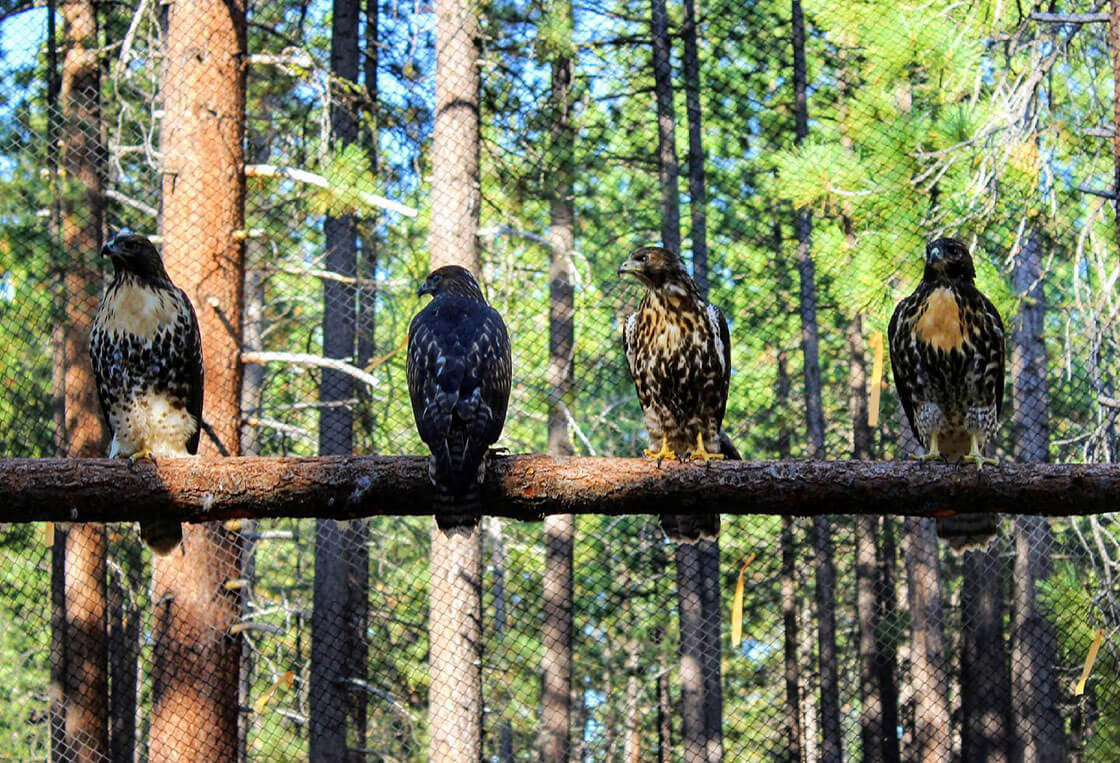
Life can get wild high up in the Sierra Nevada mountains. Of course, humans aren’t the only ones making their way across the Lake Tahoe Basin. Here is a list of Lake Tahoe wildlife and some practices to keep you and our furry neighbors safe.
Black bears are one of the most awe-inspiring animals in the Sierra Nevada mountains. As an omnivore at the top of the food chain, black bears should be treated with respect and caution. Minimizing their exposure to humans and human-related food sources is key to maintaining a healthy ecosystem and healthy bear habitat.
A healthy, wild bear should flee into the woods at the sight, sound, or smell of a human. Unfortunately, bears that become used to human food can be drawn into developed areas in search of an easy meal. Urbanized bears have a much higher chance of being struck by vehicles or having conflicts with humans. Sadly, this may ultimately lead to the animal being euthanized.
“Instead of trying to get that perfect picture or great video of a bear, let them know that they are too close and appreciate them from a distance,” said Denise Upton, Animal Care Director at Lake Tahoe Wildlife Care. “The biggest favor you can do a bear is to consistently not let them get away from being close to your territory without consequences. Even as a guest, show them it’s your space, and don’t be afraid to yell at them, use an air horn, or bang things together if you are a safe distance away. In the rare event that a bear finds its way into a building, be sure to keep clear of the way they came in as that is usually the way they will exit.”
Bears can be seen around Lake Tahoe year-round. Sightings are more frequent beginning in mid-August as bears enter a period called hyperphagia when bears eat nearly continuously to consume as many calories as possible in preparation for winter.
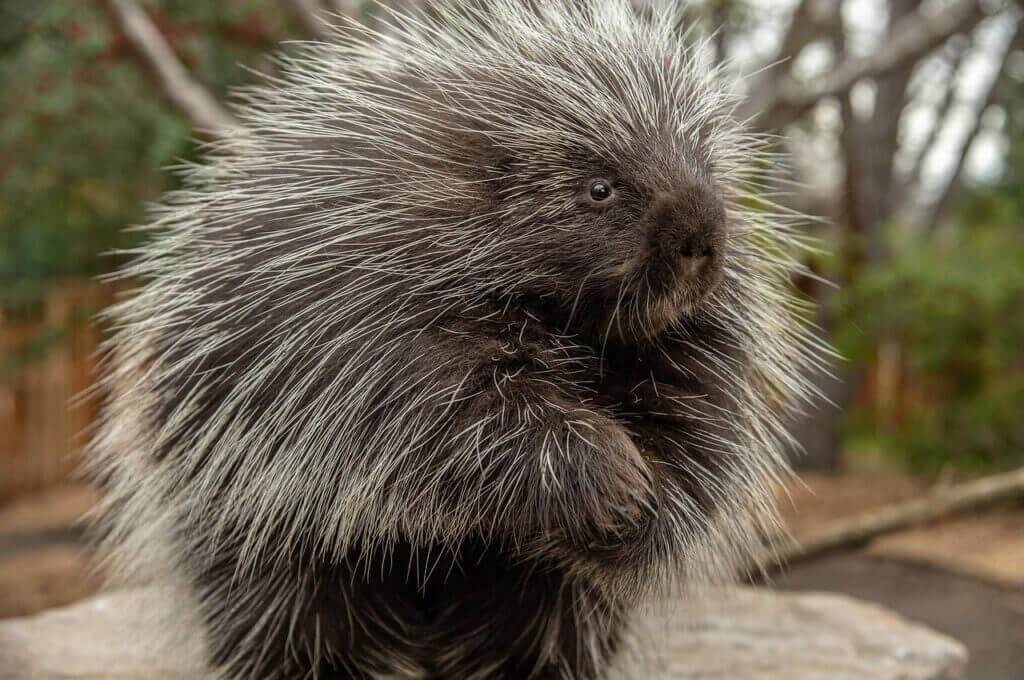
The second-largest member of the rodent family, porcupines are nocturnal herbivores with rows of incredibly sharp quills for protection. These shy creatures are a rare sight! When alarmed, they turn away, erect their quills, and swing their tails.
“Most people will live their whole lives without ever seeing a porcupine,” said Upton. “So consider yourself lucky if you do.”
Since porcupines are most active at night, keep an eye out on the road if you travel after dark. Never let pets get close to porcupines and resist the urge to pet them.
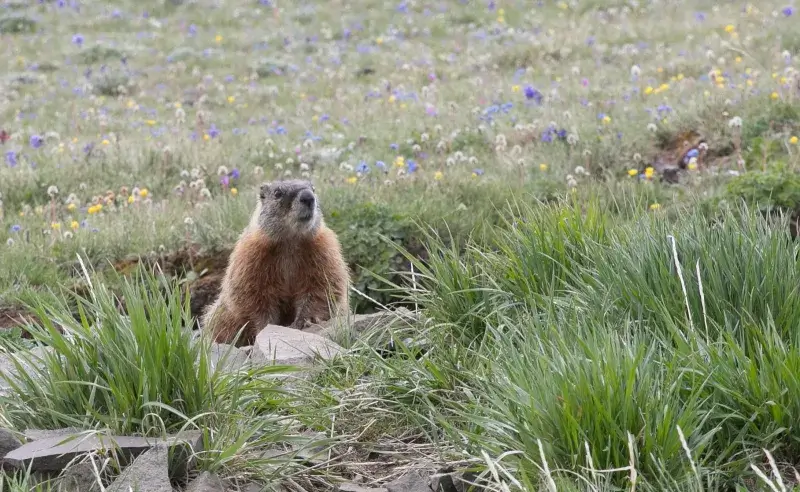
The Yellow-bellied Marmot inhabits Lake Tahoe’s alpine meadows with a shrill whistle that can echo through the mountains. To spot these delightful (slightly chubby) critters, venture above the tree line, keeping an eye out for their sunbathing figures perched on rocks or boulders. As they bask in the warmth, their distinctive yellow bellies shine, earning them their moniker. Interestingly, marmots hibernate for up to eight months, meticulously preparing their burrows for a long winter slumber.
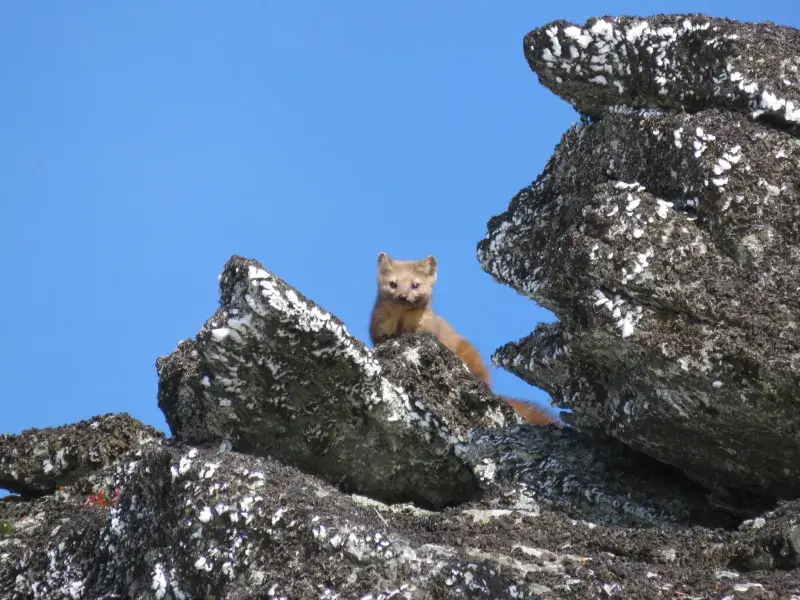
The American marten is a fairly rare sight in the United States. These sleek and agile creatures have the nimbleness of squirrels, but are about the size of a small domestic cat. Their elongated bodies and bushy tails enable them to move with grace and agility, while their sharp claws provide excellent climbing abilities. You can spy the secretive creatures in Lake Tahoe’s coniferous forests, when they’re most active around dawn and dusk. To increase your chances of spotting a marten, listen for their high-pitched vocalizations.
Fun fact: a group of martens is known as a “richness“. Add that to a “murder” of crows!
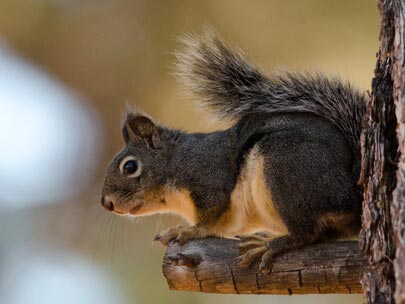
As many travelers know, the Lake Tahoe Basin has no lack of both tree and ground squirrel species. The Douglas Squirrel or Chickaree is a spirited and acrobatic squirrel known for its vocalizations — some of which sound like sci-fi effects. It has a dark brown back, bushy tail, and silvery hair tips. These cuties can be found scampering up and down pine trees while chattering away the whole time.
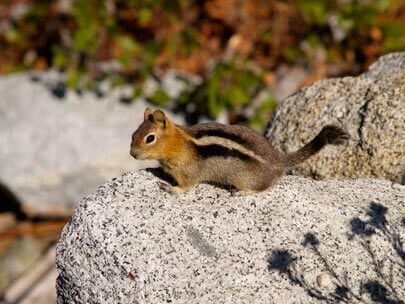
Often confused with a chipmunk, the Golden-mantled Ground Squirrel has a broad white stripe on its back. They can be found gathering nuts, seeds, grasses, and fruits in the fall before the arrival of cold weather. The golden mantle squirrel is the most common Sierra ground squirrel. They are known to gather in campgrounds and lunch spots.
The first thing you want to do if you see a squirrel is back away slowly while making yourself appear as big as possible. Okay, we’re joking, but these little critters can unnecessarily become used to foods presented by humans such as bird feeders and improperly discarded food. It is a good idea to minimize those opportunities and let them enjoy their natural diet instead.
The best time to see a squirrel is when the weather is warm. Late spring to early fall are perfect times for visitors with “see some squirrels” scribbled on their bucket list.
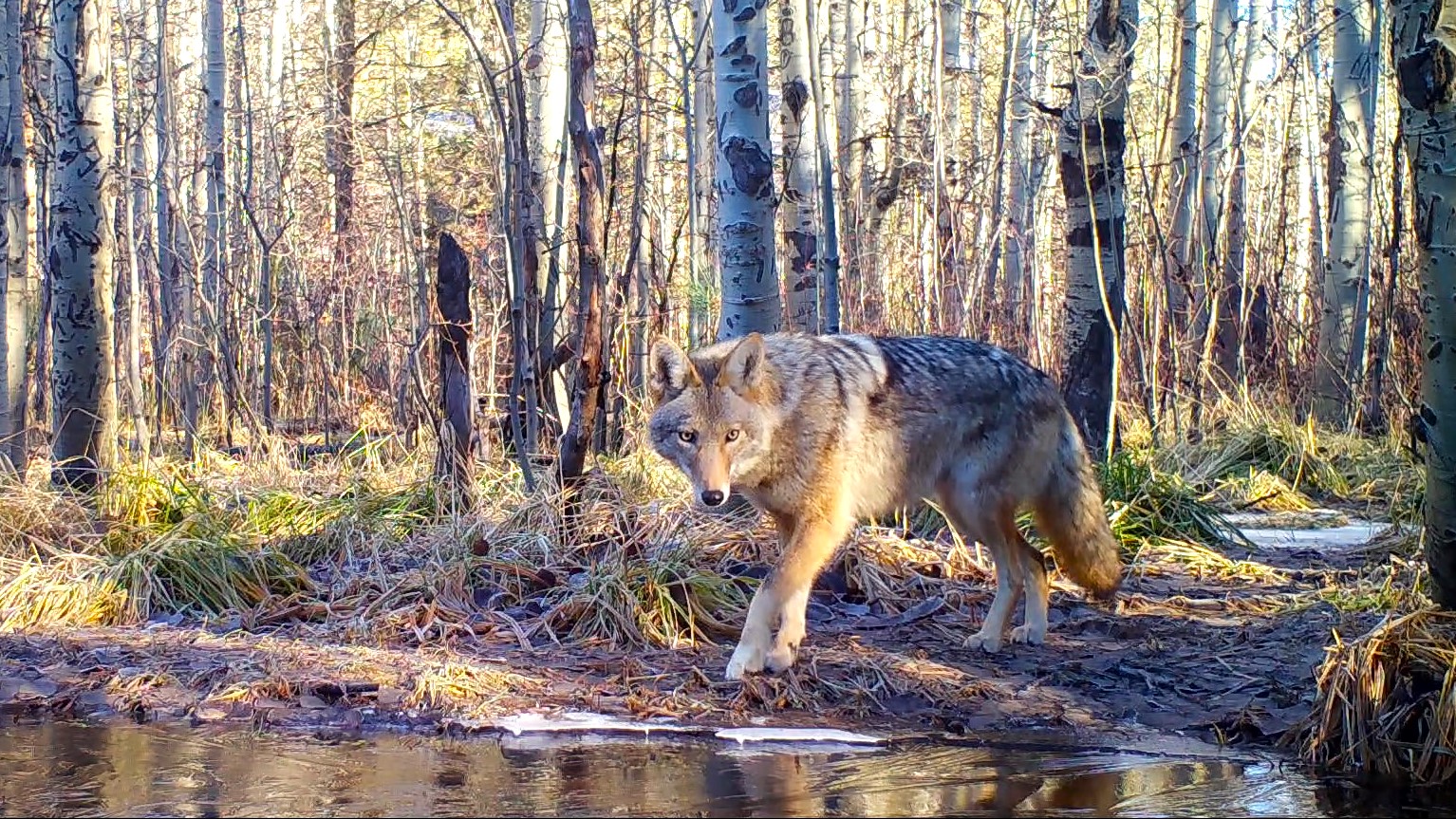
If any animal can be said to typify the wild character of the west, it would certainly be the rugged and clever coyote. A very curious animal, coyotes often live close to humans and usually hunt for rodents at night and can be seen near highways in the Tahoe Basin.
Coyotes are native to the Lake Tahoe Basin, a vital part of the ecosystem, and play a major role in the Washoe Tribe’s creation stories. Their diet helps keep rodent and rabbit populations in check although they are known to also eat insects, lizards, and plants.
If you are walking your dog at night on a trail, it is best to keep them on a leash to avoid an encounter with these beautiful and resourceful canines. Securing trash, feeding pets indoors, and removing attractants are also good ways to reduce the risk of conflict. In most cases coyotes are more afraid of you than you are of them, so be sure to make yourself appear as big as possible and give them plenty of space if you see one.
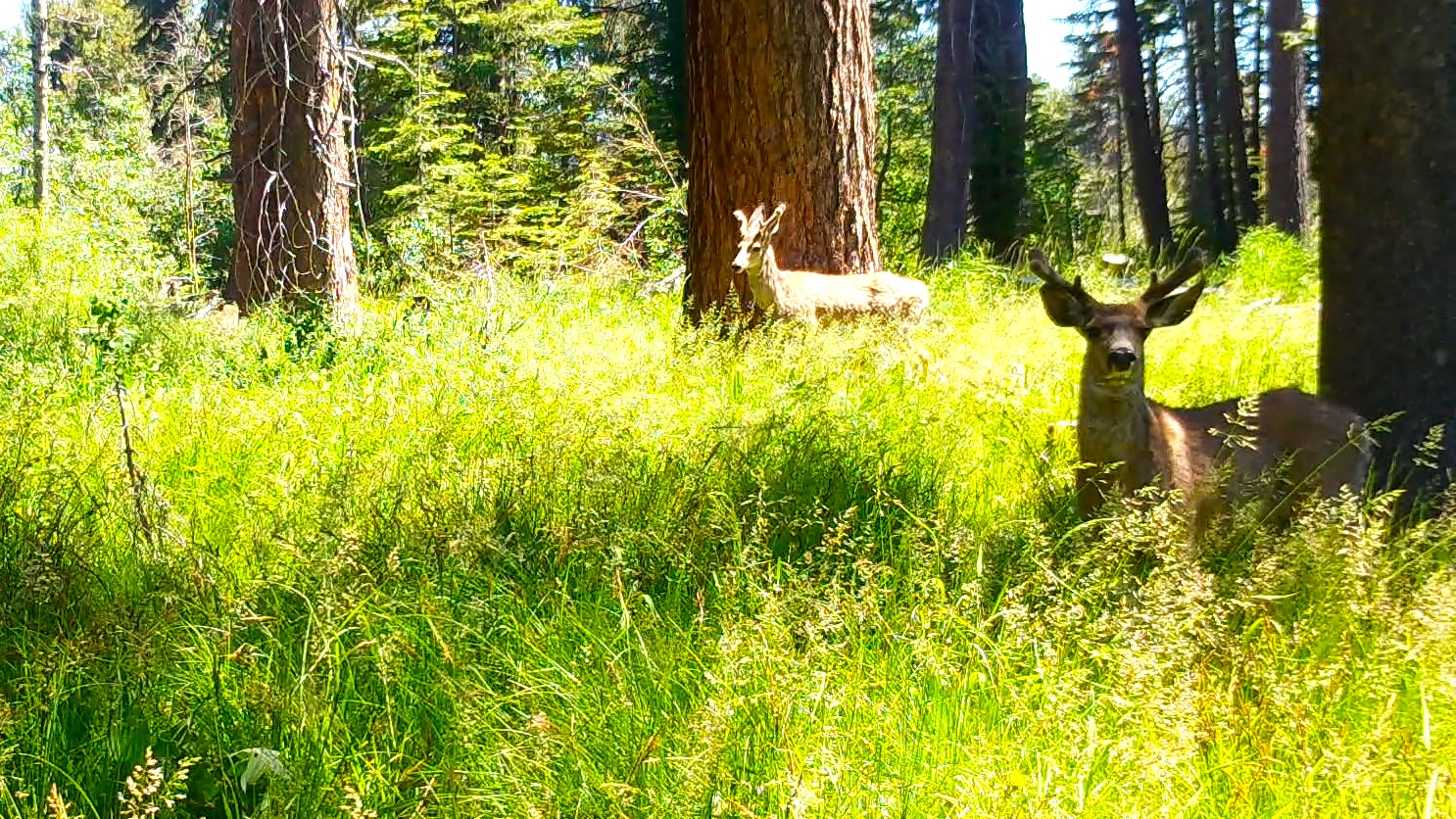
A close relative of the white-tailed deer, mule deer are migratory animals that can be seen foraging in meadows and forested areas around the Lake Tahoe Basin from spring to fall before wintering in the neighboring Carson Valley to the east.
Early morning or late evening are the best times to catch a glimpse of these large, hooved animals, especially during the rutting season in the late fall. Like all wildlife, mule deer can be unpredictable and should be given plenty of room to freely roam.
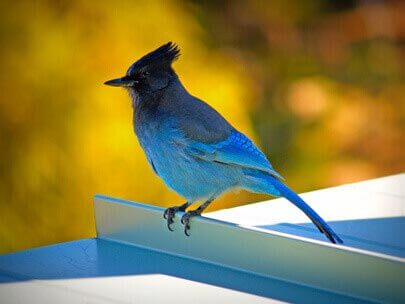
Many bird species are found in the Lake Tahoe Basin, ranging from the tiny Mountain Chickadee to beautiful mallards and even large birds of prey, including bald eagles and ospreys.
Almost anyone who spends time in the forest will meet the noisy Steller’s Jay. This pigeon-sized bird with deep blue wings, tail, and breast is hard to miss. Often this jay becomes quite bold, sometimes stealing bread crusts from tables where people are eating so be sure to keep a watchful eye on your food and properly dispose of all food.
Click here to learn more about birds in the Lake Tahoe Basin
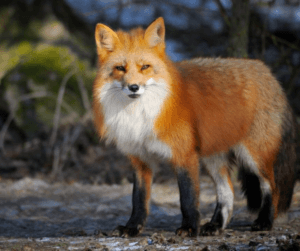
The rarest animal on the list, the Sierra Red Fox is an endangered species native to the Tahoe area. They are classified as one of the most endangered species in North America, with an estimated 18 to 39 individuals left. They are subalpine species and their decline is related to the impact on their habitat due to human activity, climate change, and wildfires.
Sightings of Sierra red foxes are few and far between, and are considered a special privilege. You may see them in Lake Tahoe’s high-altitude meadows and rocky slopes.

Most people are familiar with the raccoon. The black mask over the eyes (combined with its habit of getting into ice chests) has given it the reputation of being a camp robber. Raccoons are nocturnal and feed on anything from fruit to bird eggs. Raccoons also have a peculiar habit of dunking their food in water before eating.
Like the other critters that call the Lake Tahoe Basin home, raccoons should be respected and never allowed access to human food. In the wild, raccoons play an important role by scattering seeds from berries and nuts while eating.
While an occasional glimpse of a raccoon’s illuminated eyes while driving at night isn’t the biggest deal, these little critters can become a nuisance if irresponsible visitors or locals give them food (on purpose or by accident). Tight-fitting lids should be kept on garbage cans, pet food should be brought in at night and food should never be intentionally left out.
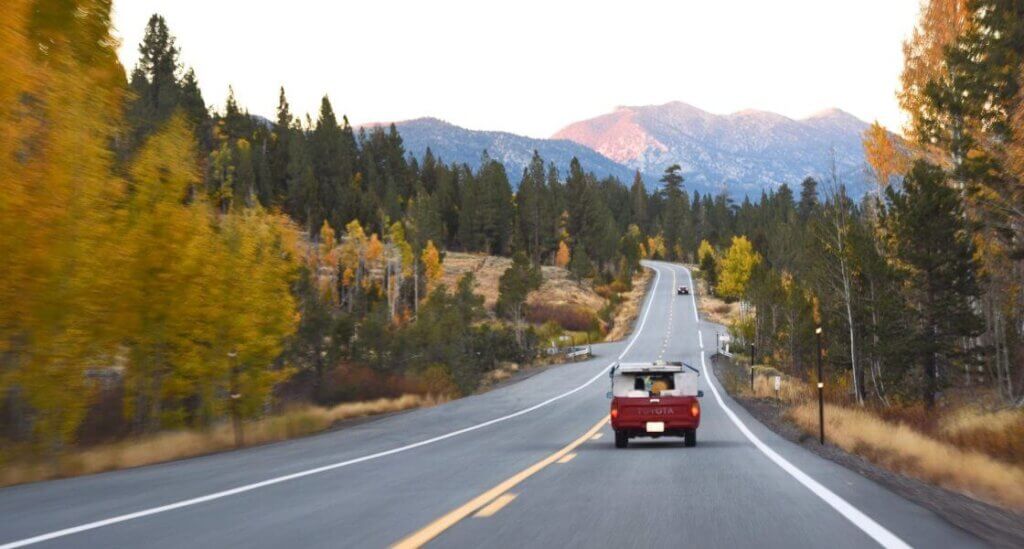
As a city in the middle of a forest, the roads through and around South Lake Tahoe run through the habitat of every animal listed above, and unfortunately, the animals don’t know that, with many collisions taking place on Friday nights when cars are coming into town.
“Don’t let your mad dash to Tahoe end with a collision with wildlife,” said Denise Upton with Lake Tahoe Wildlife Care. “The hotel front desk will wait, the ski lifts will still be spinning, and who cares if you’re a few minutes late to the show? You can make a positive impact by slowing down and looking for the animals that call Lake Tahoe home.”
Bear cubs can be especially vulnerable while traveling on the road at night. If you ever see a bear crossing the road, don’t assume it is the only one. Cubs usually follow close behind the adults and could use the help of patient motorists to be sure they make it safely.
As a mountain destination, South Lake Tahoe is naturally insulated from a lot of problems. It’s hard to notice too much of the bad when you’re soaking up the sun along miles of shoreline or taking to the trails with that sweet and unforgettable aroma of pine all around, but if you take a closer look, you’ll see that Lake Tahoe and other wild spaces need our attention.
Click here to learn more about being a next-level visitor in South Lake Tahoe.
Lodging in Lake Tahoe